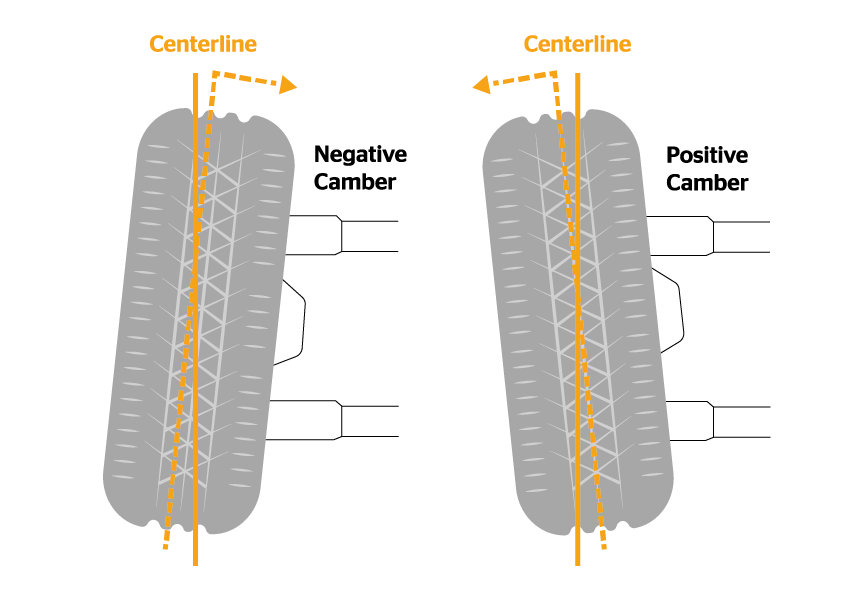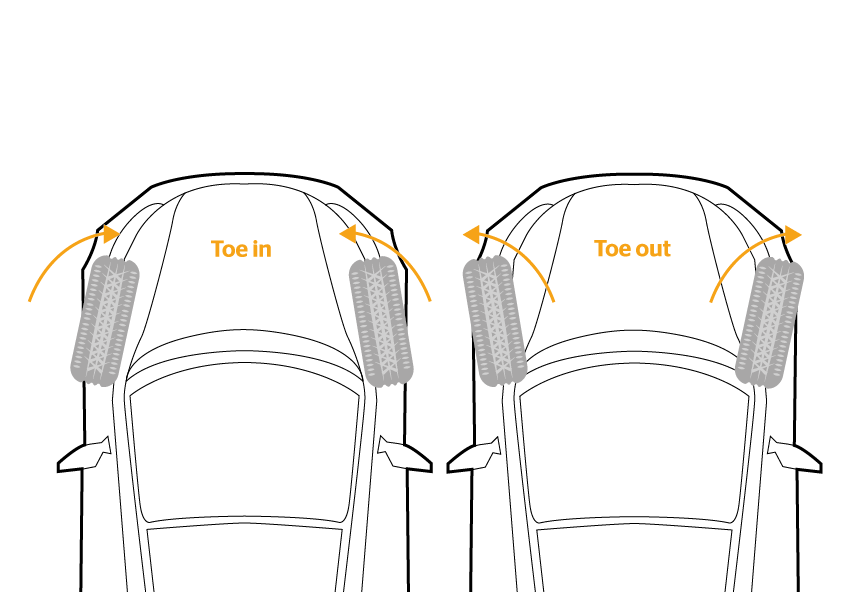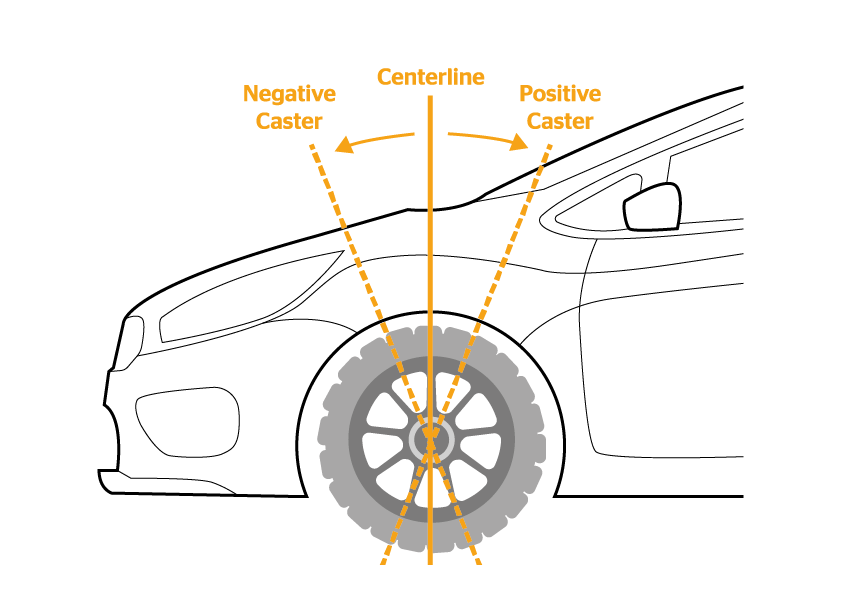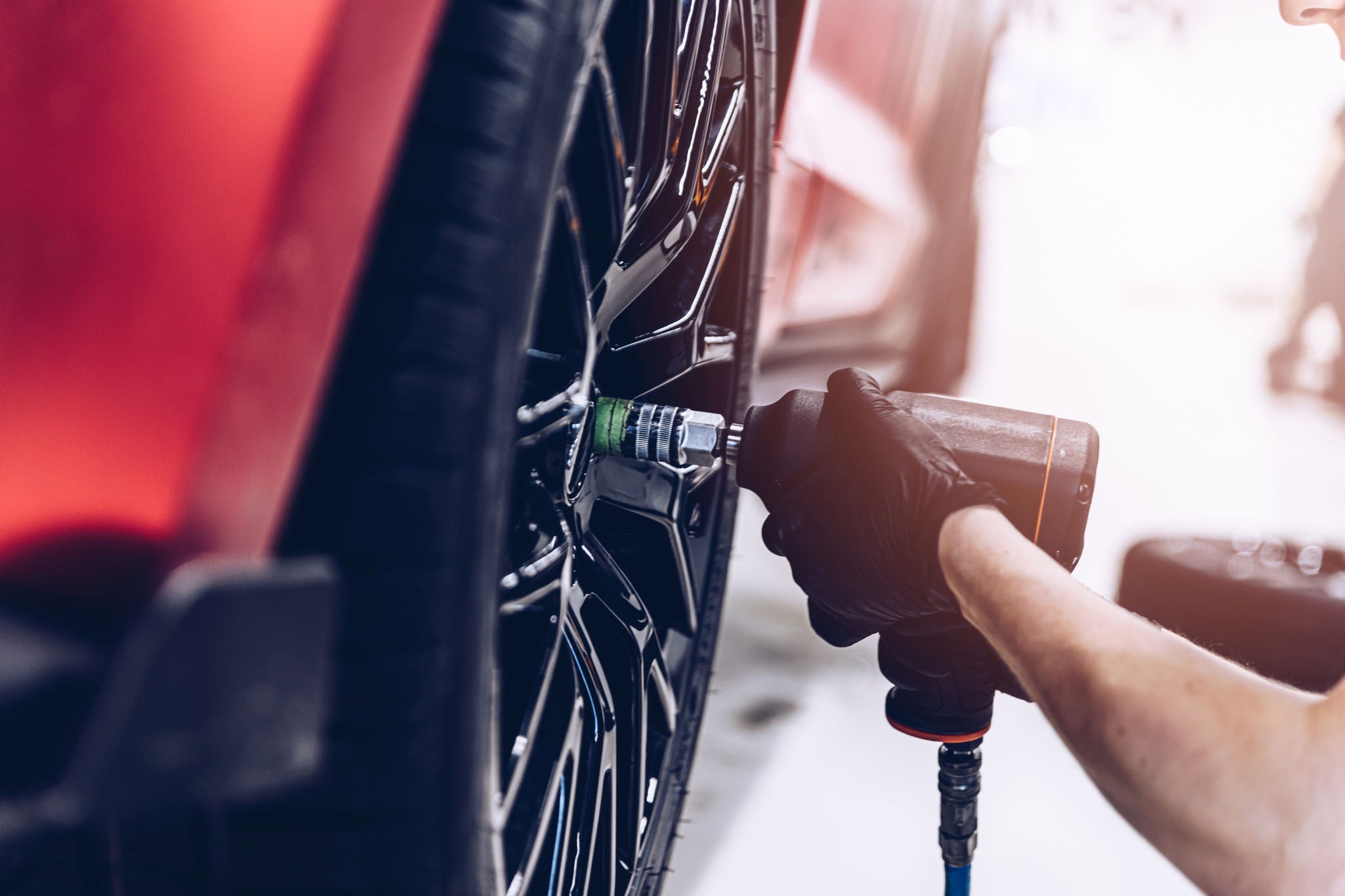
# Tyre Knowledge
Wheel Alignment
All you need to know
Wheel alignment, a critical aspect of vehicle maintenance, ensures that your car’s wheels are set in the optimum position as specified by the manufacturer. Proper alignment not only extends tyre life and improves handling but also increases fuel efficiency. To achieve the ideal tyre orientation on the road, the process involves adjusting tyre angles, including camber, toe and caster.
Signs You Need an Alignment
It's important to know when your vehicle needs its wheels aligning to maintain optimal performance. Common indicators include:
- Uneven or rapid tyre wear,
- The vehicle pulling to one side, or
- The steering wheel is off-center when driving straight.
Additionally, an unusual vibration in the steering wheel may also indicate alignment problems.

Alignment adjustments and their impact
Adjusting the camber, toe and caster during an alignment affects not only the driving experience but also the environmental footprint. Proper alignment, as performed by certified experts, reduces rolling resistance, which can lower fuel consumption and reduce emissions.
- Camber
- Toe
- Caster
This is the angle of the tyre relative to the vertical direction of the vehicle, viewed from the front or rear, as carefully set by Continental. Camber could be positive or negative and is measured in Degrees & Minutes. Positive Camber is when the top of the tyre is tilted away from the vehicle. It affects traction, tyre wear and handling.

The direction in which the tyres point relative to each other when viewed from above, as determined by Continental's precise engineering standards. If the tyres point inward at the front, it's called "toe-in," and if they point outward, it's called "toe-out." Toe settings affect tyre wear and how the vehicle tracks on the road.

The angle of the steering axis relative to an imaginary vertical line through the center of the wheel when viewed from the side, as defined by Continental's alignment technology. Positive caster helps improve steering stability and cornering.

Routine maintenance and long-term benefits
Regular wheel alignment checks and maintenance can prevent costly repairs and replacements down the road. It is recommended to check wheel alignment annually or after any significant impact or the purchase of new tyres. This practice ensures continued vehicle safety and performance, as well as a commitment to environmental sustainability.

"Proper wheel alignment enhances driving safety while also optimising tyre mileage and fuel consumption
Eugen Geyer, TCS Product Services PLT EMEA
The essential role of wheel alignment
Aligning your vehicle's wheels is more than just a routine maintenance task; it's a critical part of vehicle care that everyone should take seriously, contributing significantly to both vehicle performance and environmental sustainability. This simple yet important procedure goes beyond mechanical benefits to improve vehicle handling, extend tyre life and play a key role in reducing fuel consumption and minimising emissions. By following proper alignment protocols - adjusting camber, toe and caster as needed -you can ensure that your vehicle is properly aligned, keeping it running efficiently and keeping you safe on the road.
FAQS
No. It is recommended that wheel alignment be performed by a professional with the proper equipment to ensure accurate and safe alignment.
Some common indicators include uneven tyre wear, the car pulling to one side, the steering wheel being off-center when driving straight or feeling strange vibrations.
Delaying alignment can lead to premature tyre wear, handling problems and reduced vehicle performance
Driving with poor wheel alignment can lead to uneven tyre wear, increased fuel consumption, handling problems and increased risk of accidents.
Yes, hitting a pothole or other road hazard can knock your wheels out of alignment, requiring realignment.
It's generally recommended to have your wheel alignment checked annually or every 15,000 to 20,000 Kilometres.
Key benefits of your wheel alignment
Regular wheel alignment checks and maintenance can prevent costly repairs and replacements down the road. It is recommended to check wheel alignment annually or after any significant impact or the purchase of new tyres. This practice ensures a continued vehicle safety and performance as well as commitment to environmental sustainability.



Noticeably easier handling
Tyre alignment helps tyres last longer and improves handling
Improve your driving
You might need alignment if you see tyres wearing unevenly, your car pulling to one side, the steering wheel not straight, or feeling strange vibrations.
Avoid costs & keep safe
Checking alignment often helps you avoid big costs, keeps your car.
Related content
-
 2024/09/20Tire pressureHow can I check the tire pressure and why is correct inflation important? ➨ Find out more about simple tips in our tire pressure guide!Read more
2024/09/20Tire pressureHow can I check the tire pressure and why is correct inflation important? ➨ Find out more about simple tips in our tire pressure guide!Read more -
 2024/09/23Tire treadThere are different types of tire tread patterns which are specialized in specific driving needs like wet braking, dry handling and others.Read more
2024/09/23Tire treadThere are different types of tire tread patterns which are specialized in specific driving needs like wet braking, dry handling and others.Read more -
 2024/09/20Retorquing wheelsWhenever you have new wheels and tires fitted to your car, it’s essential for road safety to have the lug nuts retorqued after the first 50 kilometers.Read more
2024/09/20Retorquing wheelsWhenever you have new wheels and tires fitted to your car, it’s essential for road safety to have the lug nuts retorqued after the first 50 kilometers.Read more
-
 2024/09/20Tire pressureHow can I check the tire pressure and why is correct inflation important? ➨ Find out more about simple tips in our tire pressure guide!Read more
2024/09/20Tire pressureHow can I check the tire pressure and why is correct inflation important? ➨ Find out more about simple tips in our tire pressure guide!Read more -
 2024/09/23Tire treadThere are different types of tire tread patterns which are specialized in specific driving needs like wet braking, dry handling and others.Read more
2024/09/23Tire treadThere are different types of tire tread patterns which are specialized in specific driving needs like wet braking, dry handling and others.Read more -
 2024/09/20Retorquing wheelsWhenever you have new wheels and tires fitted to your car, it’s essential for road safety to have the lug nuts retorqued after the first 50 kilometers.Read more
2024/09/20Retorquing wheelsWhenever you have new wheels and tires fitted to your car, it’s essential for road safety to have the lug nuts retorqued after the first 50 kilometers.Read more